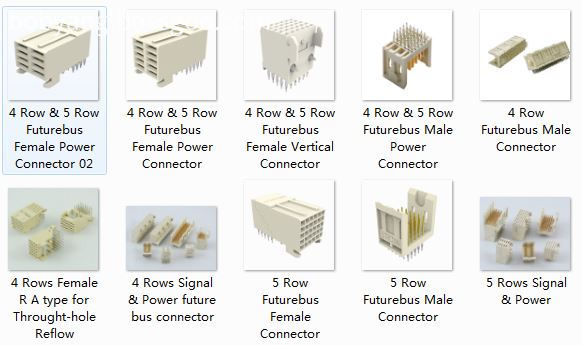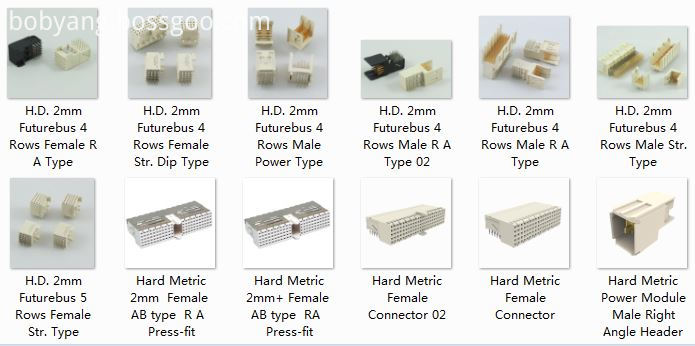August 7, 2013, Germany, New Zealand must Fort - - time, car repair in the repair shop from 2015 onwards will be greatly reduced. Thanks to Audi, Continental, Infineon Technologies and ZMDI for joint research. In the DIANA project, these companies focused their research on improving the analysis and diagnostic capabilities of automotive electronic control units (ECUs). Under the leadership of Infineon, three years of research has created a more differentiated method of fault detection, which has greatly accelerated the speed of repairs in the repair shop. With the support of research institutions and universities, the method already has "end-to-end diagnostic capabilities for semiconductor components and high-level systems used to analyze ongoing and unscheduled automotive failures" (DIANA)
Today's automotive electronic equipment is very complicated. Modern cars are equipped with an average of 80 ECUs, and advanced cars may be equipped with 100 or more. Experience has shown that it is impossible to find the exact cause of failures based on the numerous failures reported by automotive electronic systems. The repair shop usually has no choice but to narrow down the fault scope by systematically replacing system components until the fault is finally eliminated.
With the help of the methods developed in the DIANA project, in the future, it will be possible to identify automotive electronic faults more quickly, so that they can be repaired more efficiently. The decisive factor for this achievement is the quality control method deployed in semiconductor production. These methods have been further developed by DIANA project partners, so that the chips integrated into the car can be directly used in car self-diagnosis systems. Therefore, the ECU in the car can continuously monitor itself before the car is started and during driving. Based on these continuously collected self-diagnostic data, the fault can be detected early in the fault, because the diagnostic data is transmitted to the high-level system components of the ECU in a preprocessed form. This provides a great help for electromechanical engineers in the repair shop to diagnose the fault. It is the targeted cooperative research and development of DIANA partners that makes such a comprehensive diagnostic capability of automobiles a reality.
If the diagnostic technology proves to be reliable and practical in the automotive field, it will also be widely used in other areas where safety is important, such as trains and airplanes and other modes of transportation and medical technology.
The DIANA project is sponsored by the German Federal Ministry of Education and Research (BMBF) of approximately 4.8 million euros and is part of the government ’s high-tech strategy and the "2020 Information and Communication Technology Plan" (IKT 2020). Among the many themes of IKT 2020, the core theme is automotive and mobility, aiming to greatly improve the stability of automotive electronic devices.
Other project participants
The four project partners received help from the Fraunhofer Institute for Integrated Circuits in Dresden, the Bundeswehr University in Munich, the Cottbus University, the University of Erlangen-Nuremberg and the University of Stuttgart.
About Audi
As a high-end car manufacturer, Audi AG provided 1,455,123 cars to customers worldwide in 2012. The company develops and manufactures in Ingolstadt, Neckarsulm, Germany and 8 other branches abroad. The Audi Group has more than 70,000 employees, acquired Lamborghini and Ducati, and achieved sales of 48.8 billion euros in 2012.
About Continental
With sales of 32.7 billion euros in 2012, Continental is the world's leading automotive supplier. As a supplier of braking systems, power and chassis systems and components, instrumentation, infotainment solutions, automotive electronics, tires and technical elastomers, Continental has made great contributions to enhancing driving safety and global climate protection. Continental is also a professional partner for networked automotive communications. Continental currently has approximately 173,000 employees in 46 countries.
For more information, please visit TInental-corporaTIon.com.
About ZMDI
Zentrum Mikroelektronik Dresden AG (ZMDI) is a global supplier of analog and mixed-signal semiconductors for automotive, industrial, medical, mobile sensing, information technology, and consumer applications. These solutions enable customers to create the most energy-efficient power management, lighting and sensor products. Over the past 50 years, ZMDI has developed into a multinational company with its headquarters in Dresden, Germany. ZMDI has more than 320 employees worldwide and has sales offices and design centers in Germany, Italy, Bulgaria, France, Ireland, Japan, South Korea, Taiwan and the United States to provide services to customers.
About Infineon
Infineon Technologies AG, headquartered in Neubiberg, Germany, provides semiconductor and system solutions for the three major scientific and technological challenge areas of modern society—energy efficiency, mobility, and security. In fiscal year 2012 (as of September 30), the company achieved sales of 3.9 billion euros and had approximately 26,700 employees worldwide. Infineon is currently listed on the Frankfurt Stock Exchange (ticker symbol: IFX) and the U.S. over-the-counter market (OTCQX) InternaTIonal Premier (stock code: IFNNY).
Infineon in China
Infineon Technologies AG officially entered the Chinese market in 1995. Since the establishment of the first company in Wuxi in 1996, Infineon's business has achieved very rapid growth. With more than 1,300 employees in China, it has become an important driving force for the development of Infineon's Asia-Pacific and global businesses. Infineon has established a complete industrial chain covering R & D, production, sales, marketing, technical support, etc. in China, and has carried out in-depth cooperation with domestic leading companies and universities in sales, technical research and development, and personnel training. Cooperation.
Future Bus connectors Description
Future Bus connectors, which use 2mm style have a mating distance of 10mm. Both Future bus and the upgrade Future bus+ are out-dated.No additional work has been done to upgrade the specification over the years. However we still produce products which meet the Physical and Electrical layers of IEE P896.
Antenk future bus connecto feature
designed in metric dirnension on 2 millimeters grid over 5 rows.
1 Standardized product through EIA (USA), IEC and CECC (international).
2 Selected by IEEE as the interconnection system for Futurebus + / SCI / VicBus.
3 Multi-sources product,use for telecommunication, network, server / workstation market.
4 High tempersture materials SMT compatible.
5 Modular design giving flexibility for system design.
6 Stackable end to end without loss of contact position.
7 High density (more than 2 times as compared to the standard inch based " Euroconnector DIN 41612" ).
8 Tuning Fork female contact concept for higher robustness and improved reliability
(low contact resistance and high normal force).
9 Low insertion force design.
10 Inverse connector system (signal and power).
11 Optimized solder and compliant press-fit terminations for backplane and circuit board connectors.
12 differents mating lengths on signal and 3 on power for standard connector system.
Future Bus connectors Application
Telecom backplane board
Antenk offers a complete line of 5+2 and 8+2 Hard Metric Connectors as well as a complete line of 4 and 5 row Future bus Connectors.

4 and 5 row Future bus Connectors
4 Rows Signal & Power
5 Rows Signal & Power
Female IDC Type 4&5 Rows
Power Connector & Cable
Shroud
Vertical, 5 Rows
Right Aangle, 5 Rows
Vertical, 4 Rows
Right Angle, 4 Rows
5+2 and 8+2 Hard Metric Connectors

2.0mm Future Bus Connector Male DIP
2.0mm Future Bus Connector Female DIP
2.0mm Future Bus Connector Male Press Fit
2.0mm Future Bus Connector Female Press Fit
2.0mm Future Bus Connector Power Type
2mm HM (hardmetric) Connector Introduction
System designed to meet the current and future needs of instrumentation applications giving excellent electrical and mechanical characteristics. It is a high performance, high density system with flexible configuration which offers upgradeability. The connector system is fully supported by Antenk spice models to guarantee choosing the right product to match the application.
ANTENK 2.0mm HARD METRIC CONNECTOR MODULES comply with international IEC 917and IEC 61076-4-101
standards. The connector systems in telecommunication and other industries require hight density connectors to support
larger amounts of data increasingly higher speeds antenk 2mm hardmetric modules offer the solution
Features and Benefits:
This high density connector modules can be stacked end to end without loss of space.
1,ANTENK developed the 2.0mm series under thorough consideration of impedance match, propagation delay,
cross talk, reflection. It is the ideal connector for digital high speed data application.
2,ANTENK offers differend types with inverted mating configuration. The male connector is a fixed module at the
backplane and the female commector is a free component of the plug-in module. The male connector has 5 signal row.
3 The outer shielding rows z and f of the male connector engage the shielding contacts of the famale connector. theshield
is also designed for gas tight, press-fit installation.
4 The connector system offers 15 contact length that utilize the proven press-fit assembly technique. Within the 15
contact length are 3 mating levels, achievable on both the plug-in and rear I / 0 side.
5 Coding system prevents mix-up and wrong mating between male and female connectors.
6 The 2.0mm hard metric connectors and DIN 41612 connectors can be used on the same PC board as both have the
same mating distance.
7 Staggered make-break pin populations for optional hot-swap capability.
8 Rear pin option for through-the-backplane I/O application.
9 High density PCI capability,shield for EMI/RFI protection.
2mm HM (hardmetric) Connector Features:
High density system with small real estate on backplane and daughtercard
Extensive range of signal, power, coaxial and fibre board-to-board and cable-to-board connections
Modular units give flexible configuration
Special versions for VME64 extensions and CompactPCI
Signal contact rating 1.5a fully energized
Universal power module rated at 7.8A/line, 23.4A fully energized
All lines impedance controlled to 50 (single ended) and 100Ω (differential) nominal
Safe design, complies with IEC950 in mated condition
Universal power module is safe in unmated condition
Several performance levels for board and cable connectors with unshielded and shielded versions
Mismatching keys block mating before any contact touch
Small press fit board hole allows maximum track width and minimum signal corruption
1.4 to 5.6mm (0.055 to 0.220 inch) Backplane thickness range
2mm HM (hardmetric) Connector Applications
Communications & Networking, Computers & Computer Peripherals, Sensing & Instrumentation
Metric Connectors,2.0Mm Hard Metric Connectors,Hard Metric Connectors,Hard Metric Female Connector,2.0mm Future Bus Connector Male DIP,2.0mm Future Bus Connector Female DIP
ShenZhen Antenk Electronics Co,Ltd , https://www.antenkwire.com